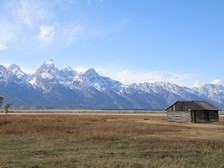You want to explore Montreal, the most important city in Quebec? Come on to see my tips to discover the essentials of the town in 2 days.
ITINERARY - CANADA: here is the full itinerary for a tour of Canada.
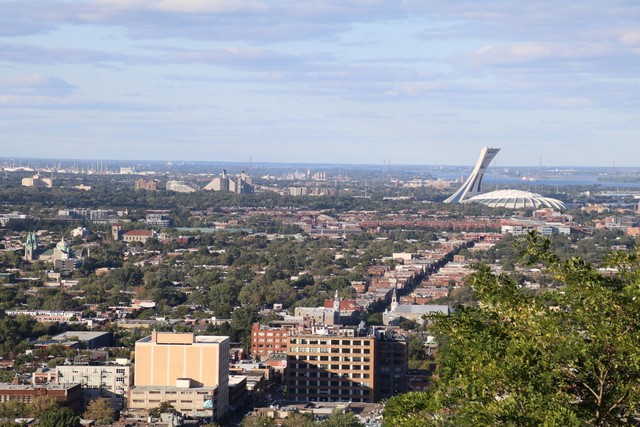
Montreal is the most populous French-speaking city in America! Over there, locals are very warm and welcoming. If you are lost, they will be happy to help. The city is very easy to explore on foot, however I recommend renting a car from the airport. Because even if you don’t use it to visit the city, it will not only allow you leaving the airport but it will also gives you a lot more freedom than public transportation, which can be even more expensive, especially if you want to go grocery shopping. And it’s not more expensive to rent the car from the airport than in the city.
Tip: if you are planning on visiting other cities or even to follow the route I traveled in south-east of Canada, I recommend renting a car in Montreal and returning it at the end of your trip, for example in Toronto. And if you do so, you should take a multi-city flight that arrives in Montreal and leaves from the other city you have chosen, in the current example, Toronto.
With that being said, let’s go to see the details of the schedule:
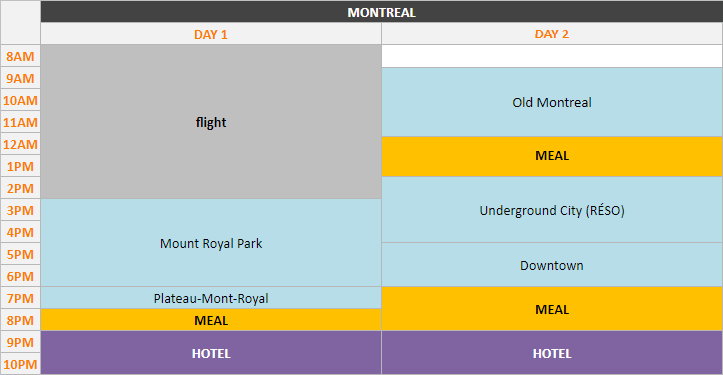
Day 1: the Mount Royal!
If like me you arrive in Montreal in the afternoon, I recommend starting by visiting Mount-Royal Park. Even though the park is very large and that it’s possible to stroll there for a whole day, the main attraction is to climb up to the chalet lookout which is located on top of the mountain. From there you can enjoy a panoramic view of the whole city! You can of course walk up there, but if you don’t feel like it, you can take a bus. If you decide to walk up there, be careful because there is not a well-defined path to climb to the top, and sometimes you have to go through the woods. Don’t be afraid to ask for directions, it’s what I did back then. A nice Quebecer showed me the path to follow.
Tip: from the top of Mount Royal, you will be able to see the Olympic stadium which was built for the 1976 Olympic Games. It is a dome with a leaning tower. You can visit the inside, and you can also climb to the top using a funicular, it will allow you to have another view on the city.
Once you’re done visiting the park, head to the Plateau-Mont-Royal, located just in front of the park. You can stroll through this neighborhood, around Saint Lawrence Boulevard and Mount Royal Avenue, to look at the architecture, the colorful houses facades and typical staircases. For dinner, you can go for a smoked meat sandwich at Schwartz’s Deli, located on Saint Lawrence Boulevard. But you’ll have to queue to enter the restaurant, which looks more like a fast-food!

Day 2: citywalk
Tip: you can also click on the link down below from your smartphone, to open the itinerary to follow on google maps: « Old Montreal » walking tour
For this second day, let’s start by visiting Old Montreal. To begin, you can pass through the Place d’Youville, where you can see the Place de la Grande-Paix-de-Montreal which is a kind of large peak, the center of history of Montreal, and the archaeological site of the Parliament of Canada which is made of 2 large models which represent buildings. Then join one of the parallel streets located just next door, rue St-Paul. It is a kind of small village with a friendly atmosphere made of artist studios, restaurants and souvenir shops. In the middle of the 2 streets, you will also find Place Royale, where the old Montreal customs building is located. In short, it is a very cozy little neighborhood where it is good to walk around, you shouldn’t get lost because the names of the streets are written on small signs with a red background.
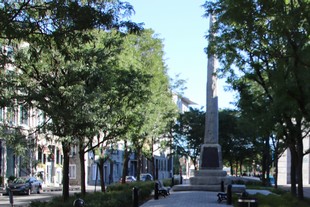

After the Place Royale, continue walking on rue St-Paul, and at the intersection of rue Saint-Sulpice, turn left and you will be able to see Notre-Dame Basilica, with the Place d’Armes located just in front of it. Then, if you continue walking, you will come across the courthouse and the Montreal city hall. In the middle of the two buildings, you can find the Place Jacques-Cartier which is made of the Nelson Column and the fountain of the Place Vauquelin.
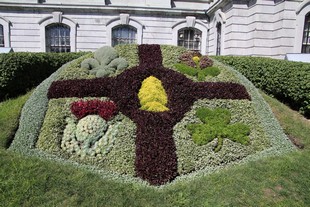
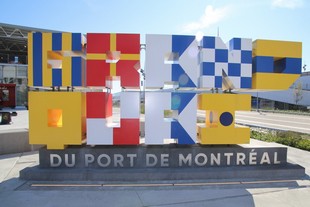
From there, take the direction of the river to be able to stroll along the promenade du Vieux-Port and then you can reach the Clock Tower. On the way, at the intersection of Quai de l’Horloge street, you can see the Notre-Dame-de-Bon-Secours Chapel on your left and the Jacques-Cartier bridge in front of you.

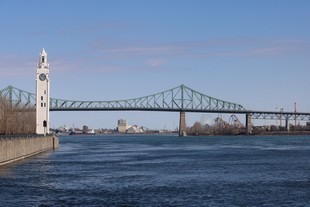
Coming back from the Clock Tower, go to have lunch before going to explore the underground network. Or you can even have lunch down there! This 32 km pedestrian network is like a city under the city, you can find everything there. When the visit is over, try to exit at Ste-Catherine Street to be able to stroll through the most important shopping street in Montreal. Then you can head to other districts of the city center, in particular the Gay Village and the Quartier des Spectacles. And for dinner, you can go to the Latin Quarter, on rue St-Denis.
Tips
Money
Canadian dollars
To get Canadian dollars, there are, to me, 2 excellent ways:
- Global Alliance: if your bank is a member of this alliance, then you can withdraw cash at any of the cash withdrawal machines of the Scotiabank in Canada with your credit card. They don’t take commission and have one of the best rates.
Tip: for example, the members are:
- Bank of America or Bank of the West in the USA
- Barclays in the UK
- Westpac in Australia and New-Zealand
- BNP Paribas or Hello Bank in France
- Currency exchange offices: you can also carry some cash and go to change it over there (or even change it before going). And if you need money at the airport, just change what you need there, you’ll change the rest in town.
Note: while in Canada, take a good look at the banknotes, you will notice that they are all made of plastic!
Taxes
Purchases
In Canada, like in the U.S., all stores display prices without tax. The tax is approximately 15% in Quebec, Ontario and British Columbia (7% to 10% provincial tax and 5% federal tax). So you just need to know that the price will be higher at checkout. However there is an exception on all unprocessed food because the tax doesn’t apply.
Restaurants
If you are planning on going to the restaurant, be aware that the bill can quickly become very expensive because on top of the price of the meal is added the 15% tax and you also have to add 15% tip. Basically, when paying the bill, you have to add twice the amount of the tax!
Hotels
I recommend booking a hotel located in the city centre, because Montreal is a city that can be explored mostly on foot. That way, it will allow you leaving your car at the hotel, and not having to pay for parking.
During my trip, I stayed at the Casa Bella hotel. It’s dated and has no lift, but considering the price and the location, it’s OK.
Description: rooms are dark and dated, but decent size. The bathroom is provided with a bathtub.
Price: about €60 per night for 2 people, in September.
Location: the hotel is very well located, close to sightseeing places.
| Pros | Cons |
|---|---|
| decent sized rooms | dated hotel |
| the price | - |
| very convenient location | - |
Transportation
Car
Renting a car to visit Canada is definitely the best solution. It gives you a lot of freedom, you can go anywhere you want to go at any time! You won’t need an international drivers licence for a trip up to 3 months, it can be up to 6 months in some provinces. Just remember to take out CDW (included into Gold Mastercards and Visa Premier cards) and LIS insurance when renting a car. And I highly recommend considering renting a car in one city and returning it in another, that way you won’t have to drive all the way back. Last thing to know, renting a car from the airport is not more expensive than renting it in the inner city!
Tip: to park in the city, it’s better to go to underground car parks rather than parking on the street because the price is often the same. The advantage of car parks is that they allow you to park for an indefinite period, you pay for the number of hours parked, while street parking is usually limited to a few hours.
Please note: during rush hour, street parking spaces are removed to allow the opening of an additional lane for cars. So if it is written $2 per hour from 2 p.m. to 4 p.m. then $1 per hour from 6 p.m. to 8 p.m., parking is often prohibited from 4 p.m. to 6 p.m.!
Very often in Canada, the parking meter ticket should be kept with you and not displayed on the dashboard. Sometimes street parking is free for 3 hours, but there is nothing to do. You just have to park and remember to leave within 3 hours.
GPS
To be able to find your way when driving the car, there are several options available:
- Google MAPS: it works even without any connection, it’s just that there won’t be traffic information. All you have to do is to save the maps before going or even once there, as long as you have an internet connection. To do so, on your smartphone, in the application, click on your profile picture at the top right of the screen, then click on « offline maps ». And then click on « select your own map » and zoom out the map until you see the area you want to save. You have to repeat the operation several times if the area to be saved is too large.
- GPS rental from the rental car company: you can rent an optional GPS from the rental car company, but it’s pretty expensive and you won’t have traffic information either. In my opinion, this is not an option to consider. However, if you are renting a high-end car, there is frequently a GPS already available in the car, so without extra charge. But you won’t know it until you get on board, because no one will tell you, either at booking or when getting the keys. For example, when I arrived at Montreal airport, as I had requested to return the car to Toronto and that they only had 2 cars registered from Ontario that had to return to Toronto, I got a « free upgrade » for an Audi A4 which had a GPS on board!
Thanks for reading :)




